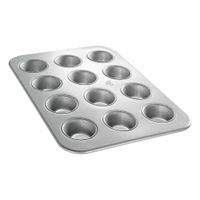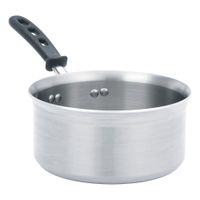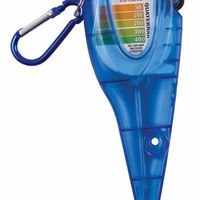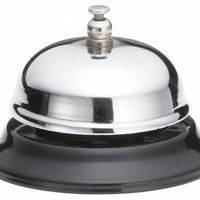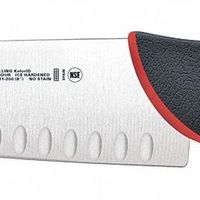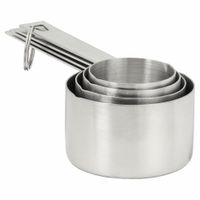Call +(254) 703 030 000 / 751 483 999 / 721 704 777
- Home
- Furnishings Appliances Hospitality
- Tableware Smallwares Food Service Storage Transport
- Kitchen Prepware Cutlery Cookware
Frequently Asked Questions
What are the essential kitchen prepware tools for beginners?
For beginners, essential kitchen prepware tools include:
1. **Chef’s Knife**: A versatile tool for chopping, slicing, and dicing. Opt for an 8-inch blade for balance and control.
2. **Cutting Board**: Choose a durable board, preferably wood or plastic, to protect your countertops and knives.
3. **Measuring Cups and Spoons**: Essential for accurate ingredient measurements. Get a set for both dry and liquid ingredients.
4. **Mixing Bowls**: A set of various sizes in stainless steel or glass for mixing, marinating, and serving.
5. **Peeler**: A sharp peeler for efficiently removing skins from fruits and vegetables.
6. **Colander**: Useful for draining pasta, rinsing vegetables, and more. A stainless steel or plastic option works well.
7. **Whisk**: Ideal for mixing, beating, and aerating ingredients. A medium-sized whisk is versatile for most tasks.
8. **Tongs**: For flipping, turning, and serving food without piercing it. Silicone-tipped tongs are gentle on cookware.
9. **Grater**: A box grater with multiple sides for grating cheese, zesting citrus, and shredding vegetables.
10. **Can Opener**: A reliable manual or electric can opener for opening canned goods.
11. **Mixing Spoon**: A wooden or silicone spoon for stirring and mixing without scratching cookware.
12. **Ladle**: For serving soups, stews, and sauces.
13. **Baking Sheet**: A versatile tool for baking, roasting, and toasting.
14. **Rolling Pin**: Essential for rolling out dough for pastries, cookies, and more.
15. **Timer**: A digital or manual timer to keep track of cooking times.
These tools form the foundation of a functional kitchen, enabling beginners to tackle a wide range of recipes with confidence.
How do I choose the right cutlery for my kitchen?
To choose the right cutlery for your kitchen, consider the following factors:
1. **Material**: Opt for stainless steel for durability and resistance to rust and stains. High-carbon stainless steel offers a sharper edge and better performance. Avoid low-quality metals that may corrode or bend easily.
2. **Design and Style**: Choose a design that complements your kitchen's aesthetic. Classic styles are versatile, while modern designs can add a contemporary touch. Ensure the cutlery feels comfortable in your hand.
3. **Weight and Balance**: Test the weight and balance of the cutlery. It should feel neither too heavy nor too light, with a balanced distribution that makes it easy to handle.
4. **Number of Pieces**: Determine the number of pieces you need based on your household size and entertaining habits. A basic set includes knives, forks, and spoons, while larger sets may include specialty pieces like steak knives and serving utensils.
5. **Quality and Brand**: Invest in reputable brands known for quality craftsmanship. Read reviews and consider warranties or guarantees offered by the manufacturer.
6. **Maintenance**: Consider the ease of cleaning and maintenance. Dishwasher-safe cutlery is convenient, but handwashing may be recommended for high-end pieces to maintain their finish.
7. **Budget**: Set a budget that balances quality and affordability. While high-end cutlery can be expensive, there are mid-range options that offer good quality at a reasonable price.
8. **Try Before You Buy**: If possible, visit a store to handle the cutlery before purchasing. This allows you to assess comfort, weight, and style firsthand.
By considering these factors, you can select cutlery that meets your functional needs and enhances your kitchen's style.
What is the best material for cutting boards?
The best material for cutting boards depends on the intended use, maintenance preferences, and personal taste. However, some materials are generally favored for their durability, safety, and ease of maintenance.
1. **Wood**: Wood is a classic choice, known for its durability and knife-friendliness. Hardwoods like maple, walnut, and cherry are popular due to their closed-grain structure, which resists moisture and bacteria. Wood boards are gentle on knives, reducing dulling. They require regular oiling to maintain their condition and prevent warping or cracking.
2. **Bamboo**: Bamboo is a sustainable and eco-friendly option. It is harder than most hardwoods, making it durable and resistant to knife marks. However, its hardness can dull knives more quickly. Bamboo boards are less prone to absorbing moisture, but they still need occasional oiling.
3. **Plastic**: Plastic cutting boards, often made from polyethylene or polypropylene, are lightweight, affordable, and dishwasher-safe, making them easy to clean and sanitize. They are available in various colors, allowing for color-coding to prevent cross-contamination. However, they can develop deep grooves over time, which may harbor bacteria.
4. **Composite**: Composite boards, made from a blend of wood fibers and resin, offer a balance between wood and plastic. They are durable, knife-friendly, and often dishwasher-safe. Brands like Epicurean are popular for their non-porous surface and heat resistance.
5. **Glass**: Glass cutting boards are non-porous and easy to clean, but they are not recommended for regular use as they can quickly dull knives and are prone to breaking.
Ultimately, the best material for a cutting board depends on balancing factors like maintenance, durability, knife care, and personal preference.
How do I properly maintain and sharpen kitchen knives?
To properly maintain and sharpen kitchen knives, follow these steps:
1. **Regular Cleaning**: Wash knives by hand with warm, soapy water immediately after use. Avoid dishwashers as they can dull blades and damage handles.
2. **Proper Storage**: Store knives in a knife block, magnetic strip, or in-drawer knife organizer to prevent dulling and accidents. Avoid keeping them loose in a drawer.
3. **Use the Right Cutting Surface**: Use wooden or plastic cutting boards. Hard surfaces like glass, stone, or metal can dull blades quickly.
4. **Honing**: Regularly hone your knives using a honing steel to maintain the edge. Hold the steel vertically and draw the knife down at a 15-20 degree angle on each side. This realigns the edge rather than sharpening it.
5. **Sharpening**: Sharpen knives when honing no longer maintains the edge. Use a whetstone, electric sharpener, or manual sharpener. For a whetstone, soak it in water, then draw the knife across the stone at a consistent 15-20 degree angle, alternating sides. For electric or manual sharpeners, follow the manufacturer's instructions.
6. **Professional Sharpening**: Consider professional sharpening once or twice a year, depending on usage, for optimal results.
7. **Avoid Misuse**: Do not use knives for tasks like opening cans or cutting hard materials, which can damage the blade.
8. **Regular Inspection**: Check for chips or damage regularly and address issues promptly to prevent further damage.
By following these steps, you can ensure your kitchen knives remain sharp, safe, and effective for a long time.
What are the differences between various types of cookware materials?
Cookware materials vary in heat conductivity, durability, reactivity, and maintenance. Here's a comparison:
1. **Stainless Steel**: Durable and non-reactive, ideal for browning and deglazing. Poor heat conductor, often combined with aluminum or copper cores for better performance. Dishwasher safe and resistant to rust and corrosion.
2. **Aluminum**: Excellent heat conductor, lightweight, and affordable. Often anodized or coated to prevent reactivity with acidic foods. Not dishwasher safe unless specified.
3. **Copper**: Superior heat conductivity for precise temperature control. Reacts with acidic foods, usually lined with stainless steel or tin. Requires regular polishing to maintain appearance.
4. **Cast Iron**: Retains heat well, ideal for slow cooking and frying. Heavy and requires seasoning to maintain non-stick properties. Can rust if not properly cared for. Suitable for oven use.
5. **Enameled Cast Iron**: Combines heat retention of cast iron with a non-reactive enamel coating. No seasoning required, but can chip if mishandled. Suitable for all heat sources, including induction.
6. **Non-Stick**: Coated with materials like Teflon for easy food release. Requires careful use to avoid scratching. Not suitable for high-heat cooking. Hand washing recommended to preserve coating.
7. **Carbon Steel**: Similar to cast iron but lighter. Requires seasoning and offers good heat retention. Reacts with acidic foods, so care is needed. Suitable for high-heat cooking.
8. **Ceramic**: Non-reactive and often non-stick. Can chip or crack with temperature shock. Generally safe for oven use but varies by brand.
9. **Glass**: Non-reactive and allows monitoring of cooking progress. Poor heat conductor, best for baking. Can shatter with temperature shock.
Each material has unique benefits and limitations, influencing cooking style and maintenance needs.
How do I prevent food from sticking to my cookware?
To prevent food from sticking to cookware, start by choosing the right type of pan. Non-stick pans are designed to reduce sticking, but if using stainless steel or cast iron, proper technique is crucial. Preheat the pan before adding any ingredients. This helps create a barrier between the food and the pan. For stainless steel, heat the pan until a few drops of water sizzle and evaporate quickly. For cast iron, ensure it is well-seasoned, which involves applying a thin layer of oil and heating it to create a natural non-stick surface.
Use the right amount of oil or fat. Add oil to the preheated pan and let it heat until it shimmers, indicating it’s hot enough to create a non-stick layer. For butter, wait until it stops foaming. Ensure the oil or fat coats the entire cooking surface.
Avoid overcrowding the pan. Cooking too much food at once lowers the pan’s temperature, causing food to release moisture and stick. Cook in batches if necessary.
Let the food cook undisturbed for a few minutes before attempting to move it. Proteins like meat will naturally release from the pan when they are properly seared. If it resists, it likely needs more time.
Use the right utensils. Metal utensils can scratch non-stick surfaces, so opt for wooden, silicone, or plastic tools. For stainless steel or cast iron, metal utensils are fine.
Clean and maintain your cookware properly. Avoid abrasive cleaners on non-stick surfaces and ensure cast iron is dried thoroughly to prevent rust. Regularly re-season cast iron to maintain its non-stick properties.
By following these steps, you can minimize sticking and improve your cooking experience.
What are the best practices for food safety and sanitization in the kitchen?
1. **Personal Hygiene**: Wash hands thoroughly with soap and water before handling food, after touching raw meat, and after using the restroom. Wear clean clothing and use hair restraints.
2. **Cleaning and Sanitizing**: Clean surfaces and utensils with hot, soapy water. Sanitize with a solution of 1 tablespoon of unscented liquid chlorine bleach per gallon of water. Regularly clean kitchen appliances and tools.
3. **Avoid Cross-Contamination**: Use separate cutting boards for raw meat, poultry, seafood, and vegetables. Keep raw and cooked foods separate. Store raw meat on the bottom shelf of the refrigerator to prevent drips.
4. **Proper Cooking Temperatures**: Use a food thermometer to ensure foods are cooked to safe internal temperatures: 165°F for poultry, 160°F for ground meats, and 145°F for whole cuts of meat and fish.
5. **Safe Food Storage**: Refrigerate perishable foods within two hours. Keep the refrigerator at 40°F or below and the freezer at 0°F. Use airtight containers to store food and label them with dates.
6. **Thawing Foods Safely**: Thaw foods in the refrigerator, in cold water, or in the microwave, not on the countertop. Cook immediately after thawing.
7. **Regular Maintenance**: Regularly check and maintain kitchen equipment. Ensure that refrigerators and freezers are functioning properly and at the correct temperatures.
8. **Pest Control**: Keep the kitchen clean and free of food debris to prevent pest infestations. Seal cracks and use pest control measures as needed.
9. **Waste Management**: Dispose of garbage regularly and keep trash bins clean and covered to prevent odors and pests.
10. **Education and Training**: Stay informed about food safety guidelines and train all kitchen staff in proper food handling and sanitation practices.
